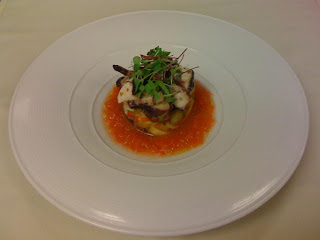
Ok chocolate lovers! July 28th is a day especially for you. It’s National Milk Chocolate Day.
And how much do we love milk chocolate? According to the National Confectioners Association (NCA), 65 percent of Americans actually prefer milk chocolate over other chocolates.
Milk chocolate is a form of chocolate which is blended with milk for a milder, creamy flavor than dark chocolate, which is composed primarily of cocoa liquor. Many candy companies utilize milk chocolate for their products, which are designed to be eaten out of hand, and milk chocolate can also be used in some baking applications.
Chocolate is derived from the seeds of the cacao plant, Theobroma cacao. The seeds or “nibs” are formed in large pods, which are harvested when ripe. Harvesters split the pods to access the seeds and then ferment them for around a week before roasting the seeds and grinding them to release their chocolate liquor. Chocolate liquor is composed of cocoa solids and cocoa butter, the fatty part of chocolate.
Pure chocolate liquor is turned into baker's chocolate, which you may be familiar with. If you have ever bitten into a piece of baker's chocolate, you also know that it is extremely bitter, due to the alkaloids in chocolate. Therefore, chocolate liquor is often mixed with sugar and other ingredients to make candy bars and other sweet chocolate products.
Typical milk chocolate includes 10% chocolate liquor, along with an additional percentage of pure cocoa solids; in Europe, milk chocolate must contain at least 25% cocoa solids. Around 12% of milk chocolate contains milk solids, and another 3.7% is composed of milk fat. Sugar and vanilla are also added to make milk chocolate creamy and to enhance the flavor. Either condensed or powdered milk may be used, depending on the manufacturer.
If you are looking for a great excuse to indulge in some sweet treats, look no further. Try this melt-in-your mouth pizza recipe for National Milk Chocolate Day.
CHOCOLATE PIZZA
6 servings.
Ingredients
1 pound homemade pizza dough, recipe follows, or purchased pizza dough
2 teaspoons butter, melted
¼ cup chocolate-hazelnut spread (recommended: Nutella)
½ cup semisweet chocolate chips
2 tablespoons milk chocolate chips
2 tablespoons white chocolate chips
2 tablespoons chopped hazelnuts, toasted
Position the oven rack on the bottom of the oven and preheat to 450 degrees F.
Method
Line a heavy large baking sheet with parchment paper. Roll out the dough to a 9-inch-diameter round. Transfer the dough to the prepared baking sheet. Using your fingers, make indentations all over the dough. Brush the dough with butter, then bake until the crust is crisp and pale golden brown, about 20 minutes. Immediately spread the chocolate-hazelnut spread over the pizza then sprinkle all the chocolate chips over. Bake just until the chocolate begins to melt, about 1 minute. Sprinkle the hazelnuts over the pizza. Cut into wedges and serve.
PIZZA DOUGH:
Yield: 1 (16-ounce) ball of pizza dough
Ingredients
½ cup warm water (105 to 110 degrees F)
2 teaspoons active dry yeast
2 cups all-purpose flour, plus more for kneading
1 teaspoon salt
3 tablespoons olive oil, plus more for bowl
Method
Mix the warm water and yeast in a small bowl to blend. Let stand until the yeast dissolves, about 5 minutes. Mix the flour and salt in a food processor to blend. Blend in the oil. With the machine running, add the yeast mixture and blend just until the dough forms. Turn the dough out onto lightly floured surface and knead until smooth, about 1 minute. Transfer the dough to a large oiled bowl and turn the dough to coat with the oil. Cover the bowl with plastic wrap and set aside in a warm draft-free area until the dough doubles in volume, about 1 hour. Punch the down dough and form into ball. The dough can be used immediately or stored airtight in the refrigerator for 1 day.
AND FINALLY…
Chocolate is a vegetable!!!
Chocolate is derived from cocoa beans.
Bean = vegetable
Sugar is derived from either sugar cane or sugar beets.
Both of them are plants, in the vegetable category. Thus, chocolate is a vegetable.
To go one step further, chocolate candy bars also contain milk, which is dairy.
Chocolate has many preservatives. Preservatives make you look younger.
So candy bars are basically a health food!


